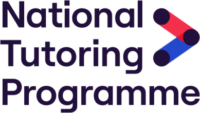All staff in school are aware that children can abuse other children, we refer to this as child on child abuse.
This can happen inside or outside of school and often online. If staff have any concerns regarding peer on peer abuse, even if there are no reports in our setting, they will seek advice from a member of the school’s Safeguarding Team.
All staff are expected to challenge inappropriate behaviours between peers, many of which are listed below, that are actually abusive in nature. Downplaying certain behaviours, for example dismissing sexual harassment as “just banter”, “just having a laugh”, “part of growing up” or “boys being boys” can lead to a culture of unacceptable behaviours, an unsafe environment for children and in worst case scenarios a culture that normalises abuse leading to children accepting it as normal and not coming forward to report it.
Keeping Children Safe in Education is the Department for Education’s (DfE’) statutory safeguarding guidance for schools and colleges in England. KCSIE states that child on child abuse is most likely to include, but may not be limited to:
· bullying (including cyberbullying, prejudice-based and discriminatory bullying);
· abuse in intimate personal relationships between peers;
· physical abuse such as hitting, kicking, shaking, biting, hair pulling, or otherwise causing physical harm (this may include an element of online which facilitates, threatens and/or encourages physical abuse);
· sexual violence, such as rape, assault by penetration and sexual assault (this may include an online element which facilitates, threatens and/or encourages sexual violence);
· sexual harassment, such as sexual comments, remarks, jokes and online sexual harassment, which may be stand-alone or part of a broader pattern of abuse;
· causing someone to engage in sexual activity without consent, such as forcing someone to strip, touch themselves sexually, or to engage in sexual activity with a third party;
· consensual and non-consensual sharing of nudes and semi nudes images and or videos (also known as sexting or youth produced sexual imagery);
· up-skirting, which typically involves taking a picture under a person’s clothing without them knowing, with the intention of viewing their genitals or buttocks to obtain sexual gratification, or cause the victim humiliation, distress or alarm;
· initiation/hazing type violence and rituals, this could include activities involving harassment, abuse or humiliation used as a way of initiating a person into a group and may also include an online element.
All Beeston Primary school staff are trained in our settings policy and procedures with regards to child on child abuse. They understand the important role they have to play in preventing it and responding where they believe a child may be at risk from it.
We will actively seek to raise awareness of and prevent all forms of child on child abuse by:
· educating all governors, its senior leadership team, staff, pupils and parents about this issue;
· educating children about the nature and prevalence of child on child abuse, positive, responsible and safe use of social media, and the indisputable facts about consent, via the curriculum;
· engaging parents on these issues;
· supporting our pupil’s mental health by providing targeted emotional support and nurture provision in school;
· working with governors, senior leadership team, and all staff, pupils and parents to address equality issues, to promote positive values, and to encourage a culture of tolerance and respect amongst all members of our school community;
· creating conditions in which our pupils can aspire to, and recognise safe and healthy relationships;
· responding to cases of peer on peer abuse promptly and appropriately;
· ensuring that all peer on peer abuse issues are fed back to the Safeguarding Team so that they can spot and address any concerning trends and identify pupils who may be in need of additional support.
In relation to peer on peer abuse, in school we will work closely with external agencies for example, children’s social care, BCM cluster services and the police.
The relationships our setting has built with these partners is essential to ensuring that we are able to prevent, identify early, and appropriately handle cases of child on child abuse.
Mrs Knowles, Designated Safeguarding Lead will regularly review behaviour incident logs on our online monitoring system to identify any changes in behaviour or concerning patterns or trends at an early stage.
We recognise that any child can be vulnerable to peer on peer abuse due to the strength of peer influence, especially in year 5 and 6.
We know that research suggests:
child on child abuse may affect boys differently from girls (i.e. that it is more likely that girls will be victims and boys perpetrators). However, all child on child abuse is unacceptable and will be taken seriously;
· children with Special Educational Needs and/or Disabilities (SEND) are three times more likely to be abused than their peers without
· some children may be more likely to experience child on child abuse than others as a result of certain characteristics such as sexual orientation, ethnicity, race or religious beliefs
If you are concerned about your child being subject to any type of child on child abuse, please inform school immediately. We are here to help.


